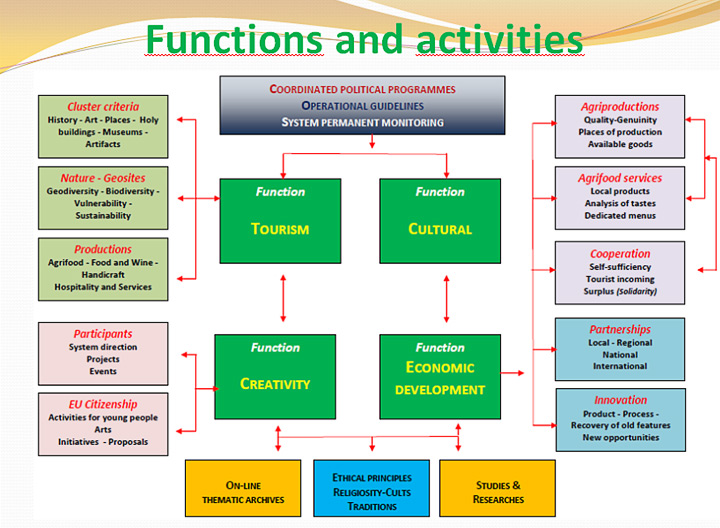Longobardia System
The “Longobardia System” is the "machine" that operates the Route "Longobard Ways across Europe" (design, organisation and management) to enhance its twofold nature in two perspectives:
- From the users' point of view, the Route should be globally attractive and at the same time extremely articulated and differentiated;
- From the partners and stakeholders' point of view, the Route should effectively drive social and economic development in all territories involved.
These two goals are shared by all European Routes. However, in this case, special solutions were designed and applied to overcome some objective issues such as: the wide extent of the Route; the fact that it covers the development (birth, growth and maturity) of an Early Medieval civilisation lasted more than one thousand years; the fragmentation of knowledge resulting from an impressive number of research activities mainly performed at the local level; the disparity in terms of quantity of archaeological, artistic and monumental evidence between the various European areas where Longobards settled in different periods.

As regards organisation, the solutions are as follows:
Setting up of a permanent steering group led by Associazione Longobardia and its statutory bodies;
- Identification of bodies in the various countries covered by the European Route to coordinate their respective associations;
- Representation of foreign countries in the statutory bodies of Associazione Longobardia;
- Setting up of clusters and their respective coordination groups;
- Adoption of technological tools to ensure permanent interaction between the central steering group and the coordination groups of clusters;
- Setting up of specialised networks (universities, museums, archives, research centres, voluntary service organisations involved in youth activities, etc.);
- Promotion of cooperation and design of projects involving national/European partners;
- Design, coordination and management of network promotion initiatives;
- Setting up of a multifunctional technological platform to boost tourist attractiveness and to ensure better guidance to users;
- Adoption of tools and systems to predict trends of specialised tourist flows;
- Permanent monitoring through a system aimed at assessing the effectiveness of organisational policies for the Route at all levels.
Thanks to these solutions, the Route becomes a narrative and experiential common thread connecting European countries and cities, including minor ones, that have a common Longobard historical matrix or where the Longobards settled, as evidenced by archaeological, museum, artistic, monumental, pictorial, ecclesiastical, naturalistic and documentary traces.
Furthermore, the Route - which is a widespread showcase of the origins of the first core of European culture - is a complex system combining and involving a plurality of public and private stakeholders that could positively affect the various territories and play a well-define role of forerunner in the organic use of history, culture and traditions to enhance the identities of those territories and their excellences and to promote cultural, tourist and economic development in each local community.
ANNEX
UNTWO Global Code of Ethics for Tourism
News
-
2025 24 SeptemberTra le carte della Corona
-
2025 24 SeptemberLa religiosità dei Longobardi
-
2025 21 MarchERRATA CORRIGE CONVEGNO DONNE LONGOBARDE
